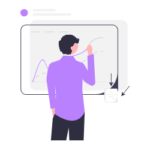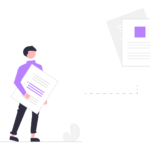Retail is a business where every product and display has a story driven by customer choices, preferences, and decisions. Understanding retail consumer behavior is not just insightful — it's crucial. It's about deciphering a complex language that transforms a routine shopping trip into an engaging journey for both buyers and sellers.
As customers navigate the store, their interactions — a lingering glance, a swift selection, or a hesitant step back — tell a rich tale. These actions raise questions: Why do certain items never last on the shelves while others barely get noticed? What draws a shopper to one product display over another? And what makes buyers return to a particular store while forgetting another?
In this article, we'll explore retail consumer behavior by shedding light on the secrets behind the shopping journey, revealing how a proper understanding of customer behavior can turn the ordinary into the extraordinary within the lively aisles of retail.
Contents
Customer buying behavior in retailing: an up-close look
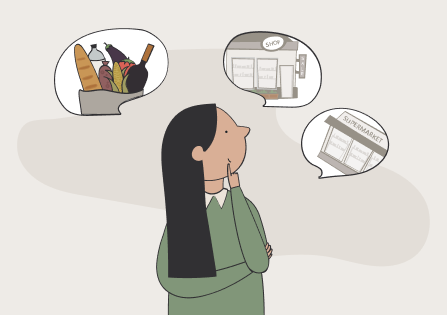
Customer buying behavior in retail refers to how people choose, buy, use, or discard products or services to meet their needs and wants in a retail setting. Many factors, including personal preferences, cultural norms, social influences, and psychological drivers, influence this intricate dance of decision-making.
At its core, customer behavior analysis in retail seeks to understand the "why" behind a shopper's actions. For example, why does one shopper gravitate towards organic produce while another consistently seeks the cheapest options? These choices are not random; their roots stem from the shopper's values, financial situation, lifestyle, and even their perception of brands and trends.
A typical scenario in physical stores: A family enters a retail store with a shopping list for their weekly groceries. The parents head straight to the fresh produce section, prioritizing health and nutrition. At the same time, their children are more drawn to the cereal aisle, influenced by colorful packaging and favorite cartoon characters. Here, a blend of individual preferences (health consciousness, taste, and budget) and external influences (advertising, peer pressure, and in-store promotions) share consumer behavior. Retailers can better understand these dynamics through customer behavior analyses and adapt their strategies to meet customer needs.
By understanding customer behaviors, retailers can strategically design their stores to enhance the retail experience and influence purchasing decisions. Retailers can nudge customers towards certain products by placing popular items at eye level, creating enticing product displays, or offering samples and promotions. The layout of the store, the ambiance, and the background music are all carefully curated elements that can subtly affect a shopper's mood and willingness to buy. Incorporating this understanding into retail strategies, marketing initiatives, and advertising campaigns allows for a more targeted approach that can significantly increase effectiveness.
Understanding customer behavior helps create personalized marketing messages, customized ads, and strategic product placements. This can boost customer engagement, increase sales, and strengthen brand loyalty. By aligning retail strategies, marketing, and advertising with customer behavior insights, retailers can create a cohesive and compelling retail experience that resonates with their target audience, driving immediate purchases and fostering long-term customer relationships.
In short, consumer behavior in retail covers the whole shopping process — from when a need arises to choosing and buying products and evaluating them afterward, including possible return visits. Retailers who master interpreting and responding to consumer behavior can significantly enhance customer satisfaction, loyalty, and, ultimately, their bottom line.
Customer’s buying behavior patterns
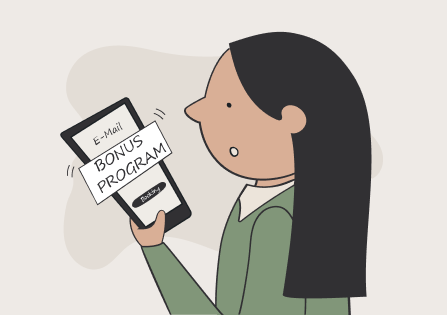
Understanding customer buying behavior patterns involves recognizing the distinct archetypes or personas that shoppers typically embody. These personas help businesses tailor their marketing strategies and product offerings to meet the needs and desires of their target audience. Here are a few examples of these archetypes:
- Value seeker. This customer is always on the lookout for the best deal. They spend time comparing prices and looking for discounts and are more likely to be influenced by promotions and sales. For instance, a Value Seeker might scour different websites for the lowest price on a new smartphone, taking advantage of seasonal sales or coupon codes to get the best possible deal.
- Loyalist. Loyal customers prefer certain brands or stores due to positive experiences, product quality, and emotional connection. They often make repeat purchases and are less price-sensitive. For example, a Loyalist might consistently buy their coffee from the same brand, regardless of price fluctuations, because they trust the taste and quality.
- Impulse buyer. This type of customer makes spontaneous purchases with little prior planning or research. Emotions or the immediate appeal of a product often drive their buying decisions. An Impulse Buyer might spontaneously add trendy clothing to their cart while browsing online, attracted by the item's visual appeal and a desire for instant gratification.
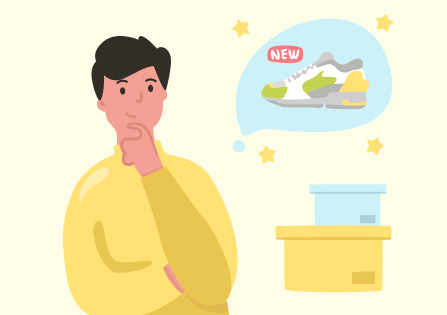
- Researcher. Researchers take a deliberate approach to shopping, spending considerable time gathering information, reading reviews, and comparing features before purchasing. They value informed decision-making and are less likely to be influenced by aesthetics. A Researcher, for instance, might spend weeks comparing different models of laptops, reading technical reviews, and watching comparison videos before choosing the one that best meets their specific needs.
- Ethical shopper. This persona prioritizes products and brands that align with their personal values, such as sustainability, fair trade, and ethical manufacturing practices. They are willing to pay a premium for environmentally friendly or socially responsible products. An Ethical Shopper might choose a more expensive coffee brand offering fair trade and organic beans over a cheaper option.
Companies like Zara have perfected responding to buying behavior by using fast fashion, quickly going from design to store shelves to take advantage of trends and consumer demands. Meanwhile, platforms like Netflix use data analytics to understand viewer preferences and tailor content and recommendations, keeping subscribers engaged and reducing churn.
The customer buying process is also a journey that consists of multiple stages, each characterized by specific behaviors and considerations. Here's an overview of the typical stages in the customer buying process and the related stuff:
- Need recognition. This initial stage occurs when customers realize they have a specific need or problem. For instance, an avid runner may notice their running shoes are worn out, triggering the need for a new pair. Retailers tend to stimulate this recognition through advertising, showcasing the latest in athletic footwear technology, or offering promotions on sports gear.
- Information search. Once the need is acknowledged, the consumer seeks information on how to fulfill it. It often involves online research, reading reviews, or asking friends for recommendations. A real-case example is the rise of influencer marketing, where consumers turn to trusted figures on social media to gather opinions and insights on products.
- Evaluation of alternatives. Armed with information, the shopper evaluates different products or brands. Criteria such as price, quality, and brand reputation play significant roles here. For example, a customer deciding between Nike and Adidas running shoes might compare their features, prices, and customer reviews to determine which ones offer the best value for their needs.
- Purchase decision. After considering the options, the customer makes their purchase decision. However, factors like a salesperson's recommendation or a last-minute discount can still influence this stage. Online retailers like Amazon excel by offering seamless checkout processes, customer reviews, and personalized recommendations that help nudge consumers towards a decision.
- Post-purchase behavior. Finally, as customers use their purchase, they reflect on their experience. If the product meets or surpasses their expectations, they remain satisfied and will likely buy again and recommend the brand to their friends and family. That applies to both store and online experiences. For instance, an excellent in-store interaction or seamless online purchase process can significantly influence customer satisfaction. On the other hand, an unhappy customer, whether from a negative store or online experience, will leave a bad review and is unlikely to return. An illustrative case is Apple's approach to customer service and its ecosystem, which aims to ensure high satisfaction levels across store and online channels, fostering brand loyalty and advocacy.
Delving deeper into the stages allows retailers to create targeted strategies that engage consumers at each stage of their buying journey. For example, the content department can provide valuable information during the search phase, while loyalty programs and exceptional after-sales service address post-purchase satisfaction.
How to gather data on consumer behavior in retail?

Gathering data on customer behavior in retail is an art and science. It can be a mix of traditional observation with cutting-edge technology to uncover the secrets behind shopping habits. This process helps retailers and marketers craft strategies that resonate deeply with their target audience. Let's explore the methods that light the way to understanding the consumer psyche.
- Surveys and questionnaires. This classic method is about asking consumers directly about their preferences, purchasing habits, and satisfaction levels. For instance, a fashion retailer might send out a survey asking customers about their favorite styles, shopping frequency, and feedback on recent purchases. Surveys can be conducted online, in-store, or via email, providing valuable insights straight from the source.
- Observational research. Sometimes, watching consumer behavior in action offers the most precise insights. Retailers may use in-store cameras or track movement patterns to see how shoppers navigate the space, which displays attract the most attention, or how long they engage with certain products. A real-world application of this is the heatmap technology used by stores to identify hotspots and dead zones, allowing for strategic product placement and store layout optimization.
- Sales data analysis. Delving into sales records can reveal patterns in purchasing behavior, product popularity, and seasonal trends. By analyzing this data, retailers can identify which products are bestsellers, which need a promotional boost, and how sales correlate with marketing campaigns. For example, a grocery store chain analyzing its sales data might notice an uptick in baking supplies sales around the holiday season, prompting them to stock up in anticipation each year.
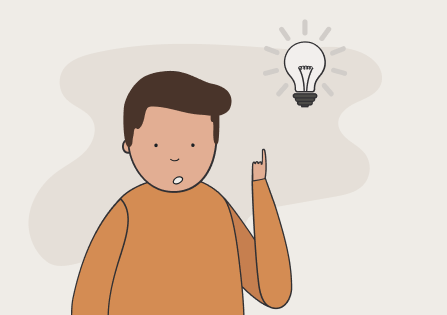
- Social media listening. In today's digital world, consumers often share their opinions and experiences online. Tools that monitor social media platforms like Hootsuite or Brandwatch can capture mentions of brands, products, and overall sentiment, offering real-time insights into consumer attitudes. A notable case is Starbucks' use of social listening to gauge reactions to their holiday cup designs, helping them tweak their approach to seasonal branding.
- Loyalty programs. By offering rewards for repeat purchases, loyalty programs encourage customer retention and collect detailed data on individual shopping habits. This information can be used to personalize marketing efforts, recommend products, and create targeted promotions. Sephora's Beauty Insider program is a prime example, using purchase history to offer tailored beauty advice and product suggestions.
- Online behavior tracking. For e-commerce, tracking tools can analyze website visits, clicks, cart additions, and abandonment to understand how consumers interact with online platforms. This method helps retailers optimize their websites for better user experiences, reduce cart abandonment rates, and increase conversions. Amazon excels in this area, constantly refining its user interface based on extensive analysis of online shopping behaviors.
- Customer feedback. Direct feedback, whether through reviews, comment cards, or customer service interactions, provides unfiltered insights into consumer satisfaction and areas for improvement. Negative feedback can be as valuable as positive, highlighting issues that may not be apparent through other data-gathering methods. Apple, known for its dedication to customer satisfaction, actively uses feedback to enhance product features and service quality.
Using consumer behavior insights to drive business

Unlocking the treasure trove of consumer behavior insights is akin to finding a map that leads directly to your customers' hearts and minds. When businesses harness this knowledge effectively, they can steer their strategies towards more engaging, satisfying, and ultimately profitable interactions. Here's how to set sail on this voyage of discovery and application.
- Personalized marketing. Tailoring your marketing messages to meet your audience's needs and preferences can significantly boost engagement and conversion rates. For instance, Netflix uses viewing habits to recommend shows and movies, creating a highly personalized experience that keeps subscribers returning for more. This level of customization makes customers feel understood and valued, fostering loyalty and increasing retention.
- Product development and innovation. Consumer behavior insights can guide the development of new products or the improvement of existing ones. Deep insights into consumer needs and technology trends often drive Apple's continuous product design and functionality innovation. By staying ahead of these curves, Apple ensures its products remain highly desirable and relevant.
- Enhancing customer experience. Understanding the nuances of how customers interact with your brand across different touchpoints enables businesses to refine the customer journey, making it as smooth and enjoyable as possible. Zappos is known for its great customer service, using consumer feedback and behavior analysis to improve its service. From free shipping and returns to 24/7 customer support, Zappos ensures a shopping experience beyond customer expectations.
- Strategic store layout and merchandising. Retail giants like IKEA use consumer behavior insights to design store layouts that optimize the shopping experience. By understanding how customers navigate their stores and interact with products, IKEA creates pathways encouraging exploration and engagement, strategically placing items to maximize visibility and attractiveness.
- Effective pricing strategies. Insights into consumer price sensitivity and perceived value can help businesses set prices that customers are willing to pay while ensuring profitability. Dynamic pricing strategies, used by companies like Amazon, adjust prices in real-time based on demand, competition, and customer behavior in retail, ensuring they remain competitive and maximize sales.
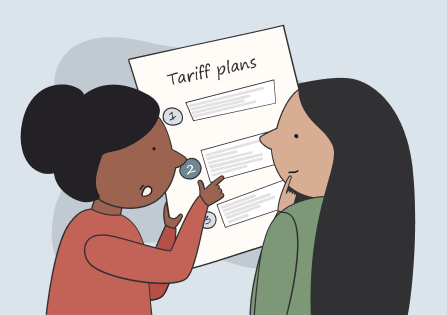
- Targeted advertising. Data on consumer preferences and behaviors enables businesses to create more effective advertising campaigns by targeting specific customer segments getting specific segments with messages that resonate. Coca-Cola, for instance, crafts its advertising campaigns around themes of happiness and togetherness, which appeal to its broad consumer base's emotions, leading to more impactful and memorable ads.
- Improving online presence. Online shopping behaviors offer insights into how businesses can optimize their websites and digital platforms for better user experiences. By analyzing click-through rates, navigation patterns, and conversion funnels, companies can identify friction points and opportunities for improvement. Google's constant updates to its search algorithm reflect a deep understanding of user search behavior, aiming to quickly provide the most relevant and valuable results.
- Developing loyalty programs. Insights into what customers value most in their shopping experience can help businesses design loyalty programs that reward and encourage repeat business. Starbucks' Rewards program, for example, uses purchase data to offer personalized perks, such as free birthday drinks and customized offers, increasing customer engagement and loyalty.
By applying consumer behavior insights across these areas, businesses can create a virtuous cycle of continuous improvement and growth. The key lies in listening closely to your customers, interpreting the data keenly, and being ready to adapt and innovate.
Wrapping up
As we conclude our exploration of consumer behavior in retail, it's clear that understanding customer decisions is crucial for retail success. Insights into consumer behavior guide businesses toward not only meeting but anticipating customer needs, thereby enhancing every aspect of the shopping experience.
Companies like Netflix, Apple, and IKEA have shown how deeply understanding consumer preferences can transform product offerings and marketing strategies into experiences that deeply resonate with consumers. This alignment fosters loyalty and sets the stage for innovation and growth.
You can go the same way and start by mapping your consumer behavior journey in UXPressia.
